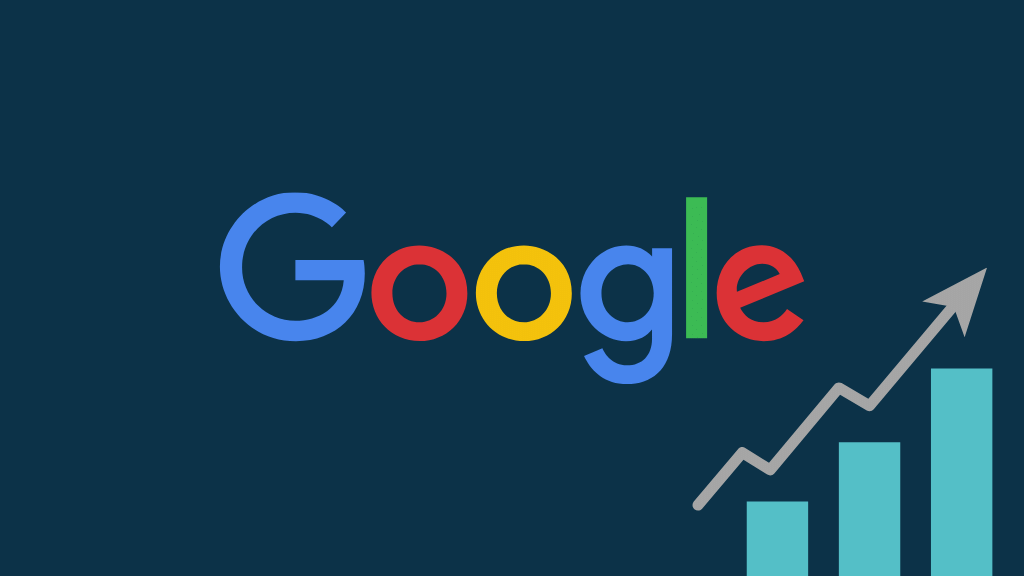How to Launch a Pay-Per-Click Campaign for a Fitness App
Looking to break through the noise in the crowded app market? Pay-Per-Click (PPC) could be your answer. It’s a powerful tool that places your fitness app front and center.
Why should you consider PPC? It’s simple. A well-executed PPC campaign can boost your app downloads, engage users, and even convert free users to premium subscriptions.
In this guide, we’ll walk you through the PPC journey for your fitness app, from understanding PPC to launching your first campaign. Let’s dive in!
Understanding PPC
If you’ve ever seen ads in search results or on social media, you’ve encountered PPC, or Pay-Per-Click. It’s a model of online advertising where advertisers pay each time a user clicks their ad. But why is this model a powerful tool for fitness app marketing?
With PPC, you can effectively ‘buy’ visibility for your app on search results or social media feeds. This high visibility can drive more potential users to discover and download your fitness app. Moreover, PPC campaigns allow for precise targeting – meaning your ads will show up for users likely interested in fitness, increasing your chances of acquiring high-quality users.
In the diverse landscape of online marketing, a range of platforms can be utilized for your fitness app’s PPC campaign. Platforms like Google Ads, Facebook Ads, and Apple Search Ads each offer unique features and targeting options that can help reach your desired audience.
Setting Your Goals
Before you jump into creating a PPC campaign, it’s important to have clear, measurable goals. These will guide your campaign’s strategy and help you measure its success. Without goals, it’s like shooting in the dark—you won’t know if your efforts are making an impact.
For a fitness app, PPC campaign goals could be:
- Increase App Downloads: Get more people to download your fitness app.
- Boost User Engagement: Encourage more usage of your app’s features and workouts.
- Upscale Premium Subscriptions: Convert free users to paid subscribers.
Your goals shape your PPC strategy. For instance, if your goal is to increase app downloads, you might focus on broader keywords that attract more clicks. But if you’re aiming to boost premium subscriptions, you may target keywords that appeal to a more niche audience, such as “best fitness app for personalized workouts”.
Budgeting for Your PPC Campaign
Deciding on a budget for your PPC campaign is a key step. It involves considering several factors, such as your overall marketing budget, the cost-per-click (CPC) in your industry, and the competitiveness of your keywords.
Different platforms have different strengths and cost structures. Google Ads often target users who are actively searching for fitness apps, while Facebook Ads can be great for reaching a broader audience based on their interests and behaviors. Apple Search Ads, on the other hand, are ideal for reaching users who are already in the App Store looking for apps to download.
Your budget allocation for each platform should align with your campaign goals. If your goal is to drive app downloads, allocating more budget to Apple Search Ads may be a good strategy. But if your aim is to build brand awareness, spreading your budget across Google and Facebook Ads could be more beneficial.
Remember, budgeting is not a one-time task. It requires constant monitoring and adjustment to maximize your PPC campaign’s effectiveness. Up next, we’ll delve into understanding your audience, a crucial aspect of any successful PPC campaign.
Understanding Your Audience
Knowing your target audience is crucial for the success of your PPC campaign. When you understand who you’re trying to reach, you can tailor your ad content, choose relevant keywords, and pick the right platforms to engage them effectively.
So, how do you identify and define your target audience for a fitness app?
Start by asking key questions: What age group does your app cater to? Is it more suitable for beginners or seasoned fitness enthusiasts? Do the features appeal more to those seeking home workouts or gym routines? Answering these questions can help you paint a picture of your ideal user.
Moreover, consider the behaviors and interests of your target audience. For instance, if your app offers yoga routines, your audience might include individuals interested in wellness, meditation, and holistic health.
Keyword Research

Keywords form the backbone of your PPC campaign—they’re what potential users type into search engines when looking for fitness apps like yours. So, it’s crucial to choose the right ones.
There are plenty of tools out there to help with keyword research. Google Keyword Planner, for instance, can provide insights into the volume and competitiveness of potential keywords. Keyword.io and SEMrush are other robust tools worth considering.
As for tips, start with thinking like your user. What would they search for when looking for a fitness app? Terms like “best fitness app” or “fitness app for weight loss” might come up. Also, consider long-tail keywords—longer, more specific phrases that users might search for. For example, “best fitness app for at-home workouts”.
Remember, the goal is not to pick the most popular keywords, but the ones most relevant to your fitness app and your audience. Good keyword research is the difference between showing your ads to a relevant audience and wasting your budget on uninterested users. With your keywords ready, let’s discuss creating compelling ads in the next section.
Creating Your Ads
Creating an effective ad for your fitness app requires attention to several key elements:
- App Title: Make it catchy and relevant. Include a keyword that users might search for.
- Description: This should highlight the unique features and benefits of your fitness app. Make sure it’s engaging and includes your targeted keywords.
- Screenshots: Visuals help users get a feel for your app. Show off your most attractive features and design elements.
Writing compelling ad copy is an art. Here are a few tips:
- Highlight the Benefits: What does your app offer that others don’t? Personalized workout plans? Nutrition tracking? Highlight these benefits in your ad copy.
- Use Strong Call-To-Action (CTA): Encourage users to download your app. CTAs like “Start your fitness journey today” or “Get your personalized workout plan now” can be effective.
- Include Keywords: Incorporating your keywords into the ad copy can boost its relevancy and attract the right users.
The relevancy of your ad and the quality of your landing page contribute to your ad’s Quality Score, a metric that Google uses to determine your ad’s position and cost-per-click. Strive for a high Quality Score by ensuring your ads are relevant, your keywords are well-targeted, and your landing page offers a great user experience.
Targeting and Bidding
Targeting the right audience with your PPC campaign is a critical step to ensure that your ads are shown to people likely to download and use your fitness app. Consider factors like age, gender, location, and interests when setting up your audience targeting.
Successful bidding is another crucial component of your PPC campaign. Here are a few strategies:
- Start Small: If you’re new to PPC, it might be wise to start with a smaller bid and gradually increase it as you gain more insights about what’s working.
- Consider Bid Adjustments: If you find that certain days of the week, times of the day, or device types are performing better, consider increasing your bids for these specifics.
- Use Your Quality Score: The better your Quality Score, the less you’ll have to bid for the top ad position.
When it comes to manual vs. automated bidding, it’s largely a matter of preference and resources. Manual bidding gives you control but requires more time and expertise. Automated bidding lets Google’s algorithms adjust your bids in real-time for optimal performance, saving you time but taking away some control.
Setting Up Conversion Tracking
Conversion tracking is a way to measure and monitor the actions users take after clicking on your ad. In the case of a fitness app, conversions might be app downloads, signing up for a free trial, or subscribing to a premium account.
Why is tracking conversions essential for a fitness app? It gives you valuable insights into which ads and keywords are driving these desired actions. This data allows you to optimize your PPC campaign, focusing on what works best and improving areas that underperform.
Here’s a simplified process to set up conversion tracking:
- Choose a Conversion Source: Decide where you want to track conversions—in your app, on your website, or both.
- Set Up a Conversion Action: In your Google Ads account, go to the “Conversions” page and click on the “+ Conversion” button. Follow the prompts to set up your conversion action, such as an app download or subscription sign-up.
- Install the Tracking Code: If you’re tracking conversions on your website, you’ll need to add a tracking code to the page your customers see after they complete the desired action, like a “Thank You” page after subscription.
With conversion tracking in place, you’re ready to launch your campaign.
Launching Your Campaign
Before you hit the ‘Launch’ button on your PPC campaign for your fitness app, let’s do a quick checklist:
- Budget: Have you set a daily or monthly budget that aligns with your marketing goals?
- Keywords: Have you researched and selected effective keywords?
- Ad Copy: Is your ad copy compelling, clear, and does it include a strong call-to-action?
- Target Audience: Have you defined your target audience accurately?
- Conversion Tracking: Is your conversion tracking set up properly?
Once you’ve ticked all these boxes, you’re ready to launch. Here are the steps:
- Log into your Ad Platform: This could be Google Ads, Facebook Ads, Apple Search Ads, or another platform.
- Create a New Campaign: Follow the prompts to set up your campaign. This is where you’ll input your ad copy, select your keywords, and set your budget.
- Set Up Ad Groups: Ad groups allow you to categorize different sets of ads and keywords.
- Input Your Ads: Insert your ad copy, including headlines, descriptions, and display URLs.
- Launch: Once everything looks good, hit the ‘Launch’ button.
After launching, don’t expect immediate results. It can take time for your campaign to start driving noticeable results. Remember, PPC is not a set-and-forget strategy. Regular monitoring and optimizing are essential, which leads us to the next section.
Monitoring and Optimizing Your Campaign
Post-launch, regular monitoring is key to the success of your PPC campaign. It helps identify what’s working, what’s not, and where improvements can be made.
To monitor your campaign, keep a close eye on these metrics:
- Click-through Rate (CTR): This measures the percentage of people who click on your ad after seeing it.
- Conversion Rate: The percentage of users who complete the desired action, such as downloading your app or signing up for a subscription.
- Cost per Conversion: This tells you how much you’re spending for each conversion, helping determine the campaign’s profitability.
With these metrics at your fingertips, you can better optimize your campaign. Here are a few tips:
- Adjust Bids: If certain keywords are driving lots of conversions, consider increasing your bid on these. Conversely, lower bids for underperforming keywords.
- Improve Ad Copy: Test different headlines, descriptions, and call-to-actions to see what resonates best with your audience.
- Targeting Tweaks: Adjust your audience targeting based on performance data. For instance, if a particular demographic is converting at a higher rate, focus more on targeting them.
Remember, optimization is a continuous process that can lead to improved results over time. Let’s explore some common mistakes to avoid in the next section.
Common Mistakes to Avoid
Launching a PPC campaign for a fitness app isn’t without potential pitfalls. Here are a few common mistakes to steer clear of:
- Ignoring Mobile Optimization: Given that your product is a fitness app, ensuring your ads are mobile-optimized is crucial. Failure to do this can severely limit your campaign’s effectiveness.
- Setting and Forgetting: PPC campaigns require ongoing attention. Regular monitoring, testing, and optimizing are crucial for success.
- Vague Targeting: Fitness apps can appeal to a wide range of demographics. However, it’s essential to narrow down your audience for effective targeting.
- Not Using Conversion Tracking: As highlighted earlier, conversion tracking provides valuable insights for optimization. Neglecting this tool can lead to missed opportunities.
To avoid these mistakes:
- Test Across Devices: Ensure your ads display well across different devices, particularly on mobile.
- Schedule Regular Check-Ins: Dedicate time to regularly review and optimize your campaign.
- Define Your Audience: Use market research and user data to hone in on your target audience.
- Implement Conversion Tracking: Set this up at the beginning of your campaign and utilize the insights it provides.
With these pitfalls avoided, you’re well on your way to running a successful PPC campaign for your fitness app. Now, let’s wrap things up in the conclusion.
Conclusion
In essence, launching a PPC campaign for a fitness app requires a thorough understanding of PPC, clear goal setting, precise budgeting, targeted audience identification, strategic keyword research, creative ad creation, and meticulous campaign tracking.
The journey doesn’t end at launching. Regular monitoring and optimization are integral for ongoing success. Remember, the world of PPC is dynamic – don’t hesitate to experiment, learn, and adapt. Now, gear up and kickstart your fitness app’s PPC campaign. You’ve got this!



